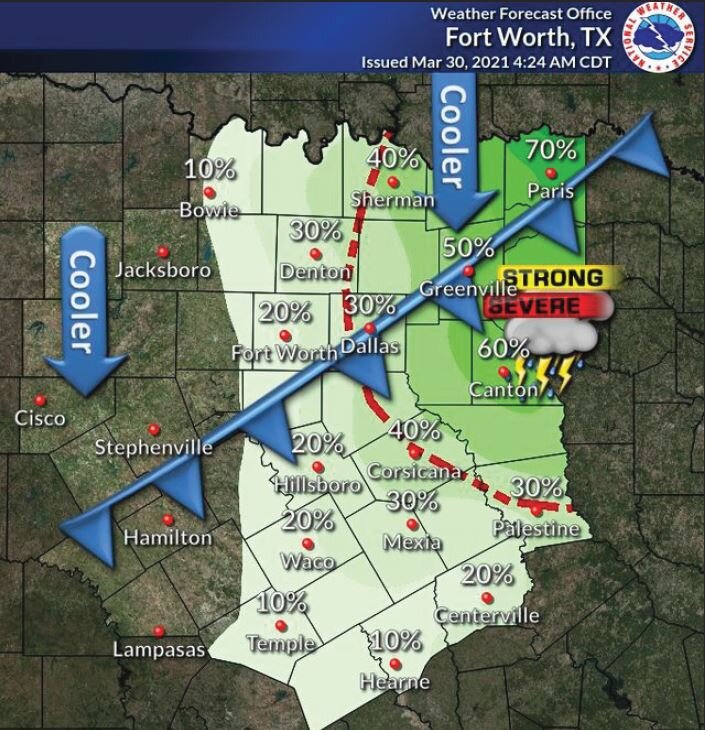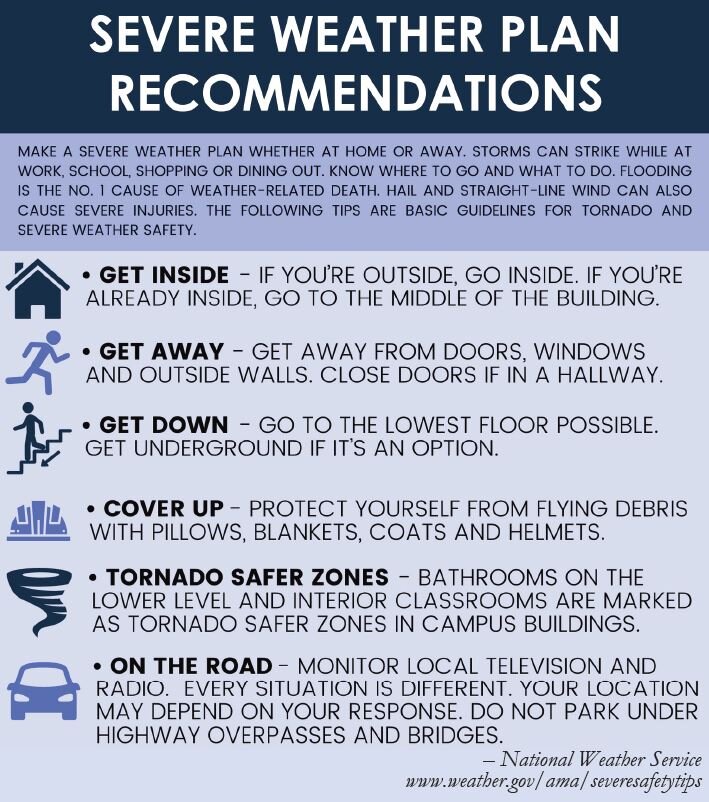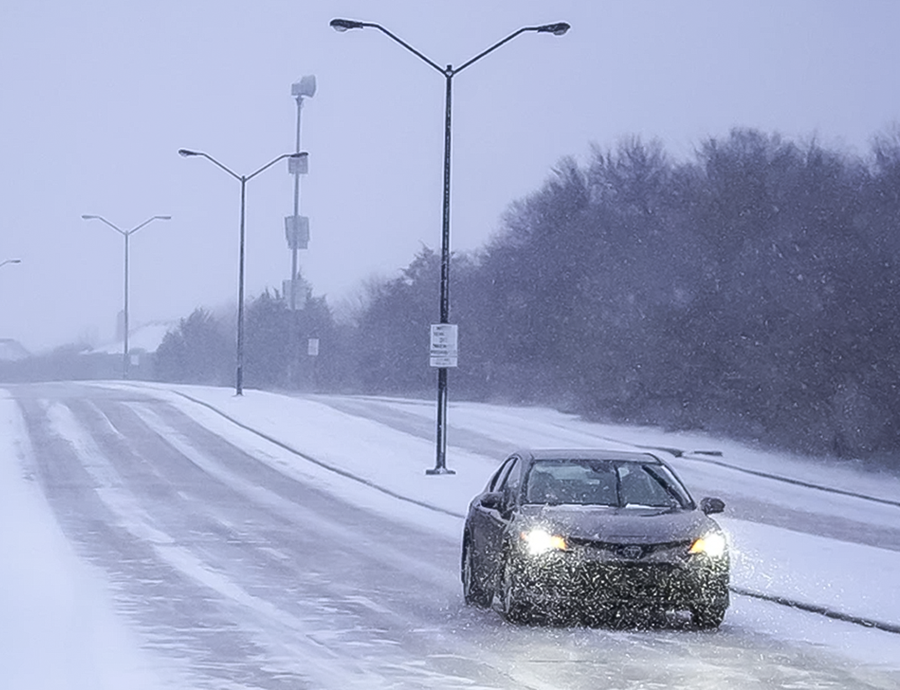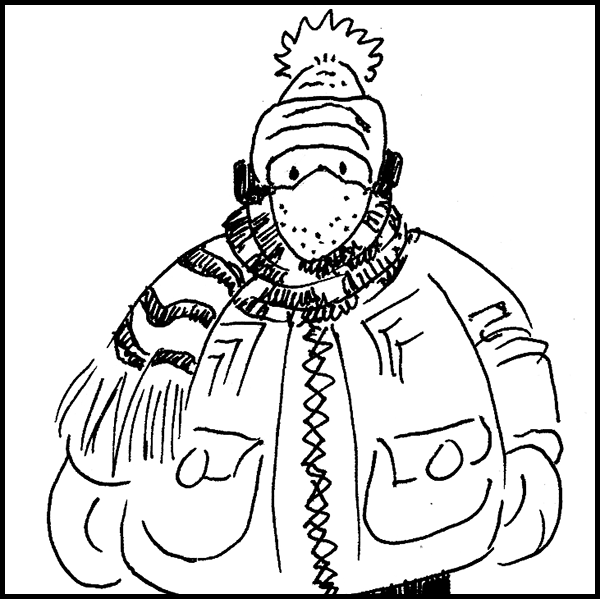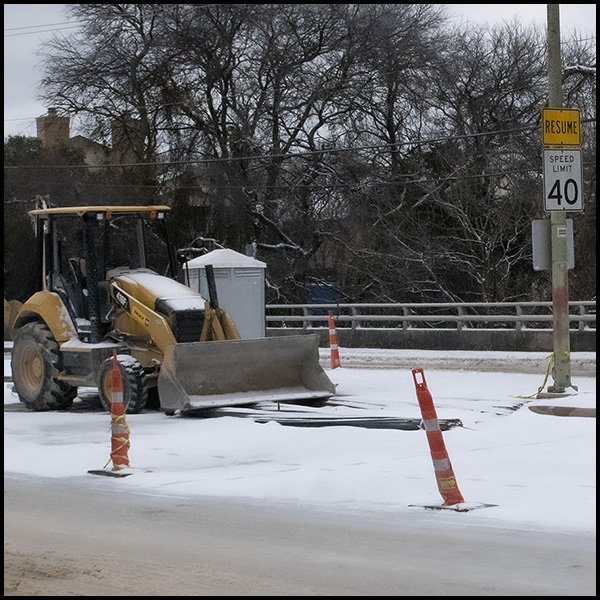Spring is in the air, which occasionally means severe weather is in the air too. In the 21st century, Texas residents don’t need to look up into the sky and wonder what’s going on. They have an ally in local news outlets that partner with the National Weather Service (NWS). This federal agency keeps track of weather patterns, communicates with the media, county and municipal Emergency Management System (EMS) officials and event coordinators.
NWS Warning Coordination Meteorologist Jennifer Dunn joined Richland Student Media from her weather watching location at the Texas Motor Speedway for the Journalism Speaker Series on March 24. She gave the attendees a look behind the scenes at some of the services the agency provides. Dunn is based out of the Fort Worth office, one of 122 across the U.S.
The graphic shows a county map of North Texas where a cold front is forecast for March 30.
“We cover what’s considered North and Central Texas, and we have forecast responsibility for 46 counties, so our extent is larger than the local newspapers, or even the DFW broadcast media that you watch on TV,” she said. The NWS in Fort Worth has 28 employees, 19 of which are degreed meteorologists.
“We always have at least two meteorologists, two forecasters on shift, 24 hours a day,” she said. The center keeps at least an eight-day outlook on upcoming weather patterns, updating the forecast as a weather event draws nearer. They issue the appropriate watches and warnings to their outlet partners as the storm moves through the area.
Media outlets employ their own meteorologists but still benefit from a partnership with the NWS, according to Dunn.
“People turn to the broadcast media first and we recognize that. We’re not trying to compete with them. We’re trying to work with them. We want to have a consistent messaging during hazardous weather, so that if there’s a tornado warning in the area you’re hearing that from us, you’re hearing it from Channel 4, Channel 5, Channel 8, any of the Spanish stations and any of the other broadcasters that might be out there,” she said. In addition, the NWS utilizes their website, social media and community seminars to get out the weather word.
Dunn suggested that students check multiple sources such as news networks, social media and smart phone apps in order to stay updated on the latest severe weather this spring. You can follow the NWS on Facebook, Instagram and Twitter by looking up the office nearest you.


